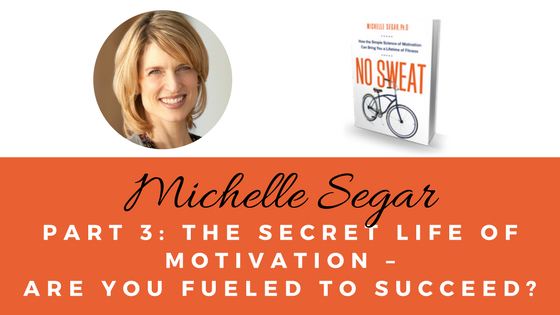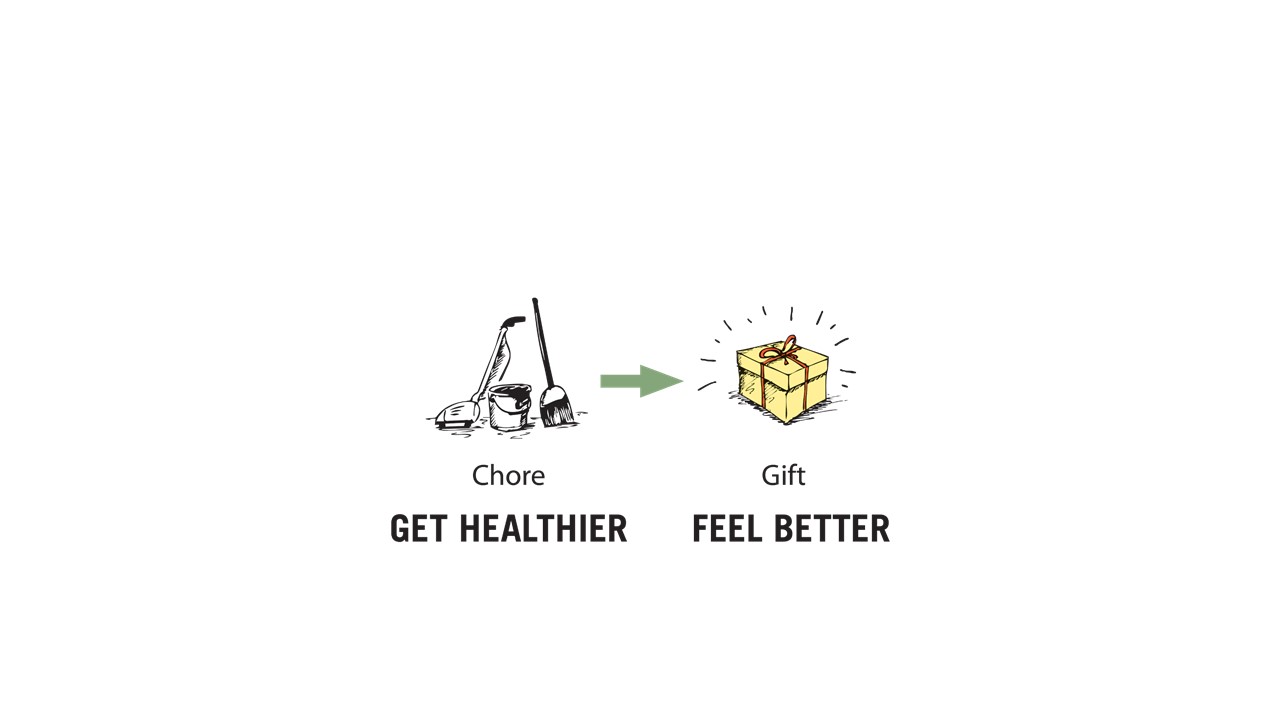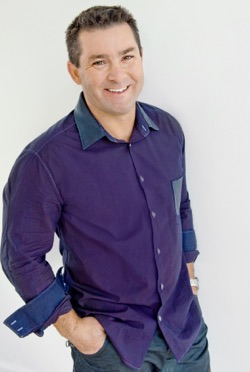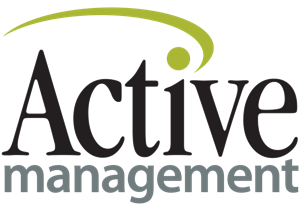Michelle Segar Part 3: The Secret Life of Motivation – Are You Fueled to Succeed?

Last week, in the second of this three-part series, I explained how having internal sources of fuel, or drive for self-care behaviors (e.g. more exercise and sleep) helps individuals take ownership of their daily choices and behavior. If you’d like to read this three-part blog series in order, the links are: Part I, Part II.
This week’s post describes some of the concrete ways individuals, practitioners, and organizations can convert external fuel (“extrinsic motivation”) into an internal, renewable energy source that continuously drives health-related behaviors and self-care (“intrinsic motivation”).
A Necessary Conversion: From Important to Essential
Converting an external source of fuel into an internal one is necessary if you want lasting behavior. This conversion transforms a dreaded chore into an authentic and meaningful behavior. Thus, our drive for this behavior has to become fueled by an inner integrity that will be supported by our core purpose and values.
This takes a behavior from being “important” to being “essential” to fit into our busy lives.
So, how can individuals, practitioners and organizations help people shift externally fueled behaviors into an internalized and renewable source of energy? I describe strategies below by each group. Feel free to skip the sections that don’t interest you and go right to one that does.
Individuals: Make the Behavior Your Ally
Below are some key strategies that you can use in your own life.
- Assess whether, in general, your motive for adopting this new behavior feels like something you are trying to force into your life or as a specific strategy that can help improve your life in very real ways.
- If your purpose for doing this behavior feels external and forced it is important for you to recognize. Decide whether you want to convert this behavior into a trusted ally that will enhance your daily life.
- To create an internal source of fuel it’s important that you start to perceive this behavior as a reliable ally. You should acknowledge that it will help you take better care of yourself and foster the kind of life you want to live.
- Consider very specific ways you might benefit each day by choosing this behavior.
- Toss out “gold standards” for this behavior and create realistic goals. Plan it into your day like any other important activity. This will create space for the behavior and also serve as a reminder when life gets busy.
- Start tracking how your daily well-being and success benefit from this behavior.
- Acknowledge that this is a learning process, and not something you can just “turn on.” We let our kids take time to learn important skills, like math or swimming. How about giving ourselves the same opportunity?
- If you’d like to read a previous post I wrote about making this behavior an “ally,” check out this post.
Behavioral and medical practitioners: From a Chore to a Gift
I have been training physical and occupational therapists the steps to transform a health behavior from a “chore” (“extrinsic motivation”) into a “gift” (“intrinsic motivation”) with patients. Below are some strategies that I teach that anyone can use with their patients.

- Understand that the way your patients and clients perceive and approach any behavior change is simply the way they’ve been taught. This includes how we’ve been taught to change our behavior (“exercise 30 minutes 5 days/week,” “eat 9 fruits and vegetables/day,” etc.), and also the purpose for which we’ve been told to change our behavior (“reduce cholesterol,” “lose weight,” etc.)
- Ask your patients directly about what they’ve learned regarding the behavior under consideration and where they learned it. Their answers are their mental model for the behavior. At this juncture, help them identify if their model is accurate. (For interesting reading on how people construct their lives through mental models, see Michael Bergeisen’s interview with Srikumar Rao’s here).
- Help them identify “black and white” thinking and “gold standards” that demand perfection. However, to do this you must become aware of your unrealistic beliefs that get passed on to the people you are coaching.
- Have them list and assess the reasons they think they should make this change to help them assess whether they have an “external” or “internal” source of fuel.
- Start fresh! Help them create reasons for change that THEY care deeply about.
- One week is a good time period for experimenting and assessing. Help them identify if these new internal reasons for behaviors enhance their daily life. This should be done weekly for a period of time. (Remember, it’s a learning process.)
- Talk explicitly about how the “gifts” from doing this behavior can continue as long as they keep doing it. One subtle but important perk to ask them to notice is the feeling of pride from making choices that favor self-care over immediate gratification. (Also, ask them to notice how they feel when they don’t do it. This helps them really understand the relevant ways in which this behavior is an ally to their daily life.)
- When we help patients shift their mindset for self-care behaviors from “chores” to “gifts,” it changes the emotional charge they feel toward that behavior. (How people feel about the behavior is an unconscious source of motivation so their feelings about the behavior matter a great deal.)
Organizations: Bypass Health to Thrive
Below are some key strategies for use by organizations.
- Assess the specific benefits your organization has been promoting to end users (for participation, membership, and/or enrollment in programs).
- Evaluate the effectiveness of these rewards to engage your target population and motivate ongoing behavior. Hint: Are you fostering internal or externally sourced fuel? Are the benefits from these behaviors compelling to your busy target audience?
- The next steps depend on whether your organization, or an outside vendor, is providing your wellness/health communications strategy and programming.
- If a vendor, ask them how their strategies are fostering internally sourced fuel among your end users.
- If you are in charge of your organization’s initiative, talk to the employees/end users about what they care MOST about every day. Develop new messages and program strategies to link self-care behaviors with these outcomes. (We health promoters are extremely fortunate that the “health” behaviors we want to promote actually do double duty and are also levers for thriving.)
- It’s time for health promoters to stop promoting health. Why? Health is competing with too many other, much more, compelling goals to win.
- It’s time to get creative and have fun doing it. Think energy. Think strength. Think humor. But please, please please stop talking about these powerful self-care behaviors as if they are bitter pills to take! This is marketing 101, folks.
- Don’t forget to set up ways to evaluate whether and/or how these creative changes are influencing people’s lives and the behavioral outcomes you seek. Consider this a path that doesn’t end, and keep innovating and learning as you go.
Moving Toward Happiness: One Step a Time,

Michelle
Find these ideas interesting or useful? If so, please share this post with your friends, family, colleagues, and/or health care professionals through social media. Connect with Michelle Segar at www.MichelleSegar.com
You can grab a copy of No Sweat by clicking here.
Michelle has also been a guest on The Fitness Business Podcast. In fact she had one of the top 4 most downloaded shows in 2015. You can listen to her shows by clicking the links below:
054 Michelle Segar – Self Care Behaviour and the Effect it has on Trainer Client Relationships

Justin is the Managing Director of Active Management, which he began January 2004. He offers coaching to businesses worldwide in everything from start up and design to marketing and sales systems. Justin also facilitates four Australian and New Zealand ‘fitness industry roundtables’ events, which allows him to see a huge cross section of business models.
